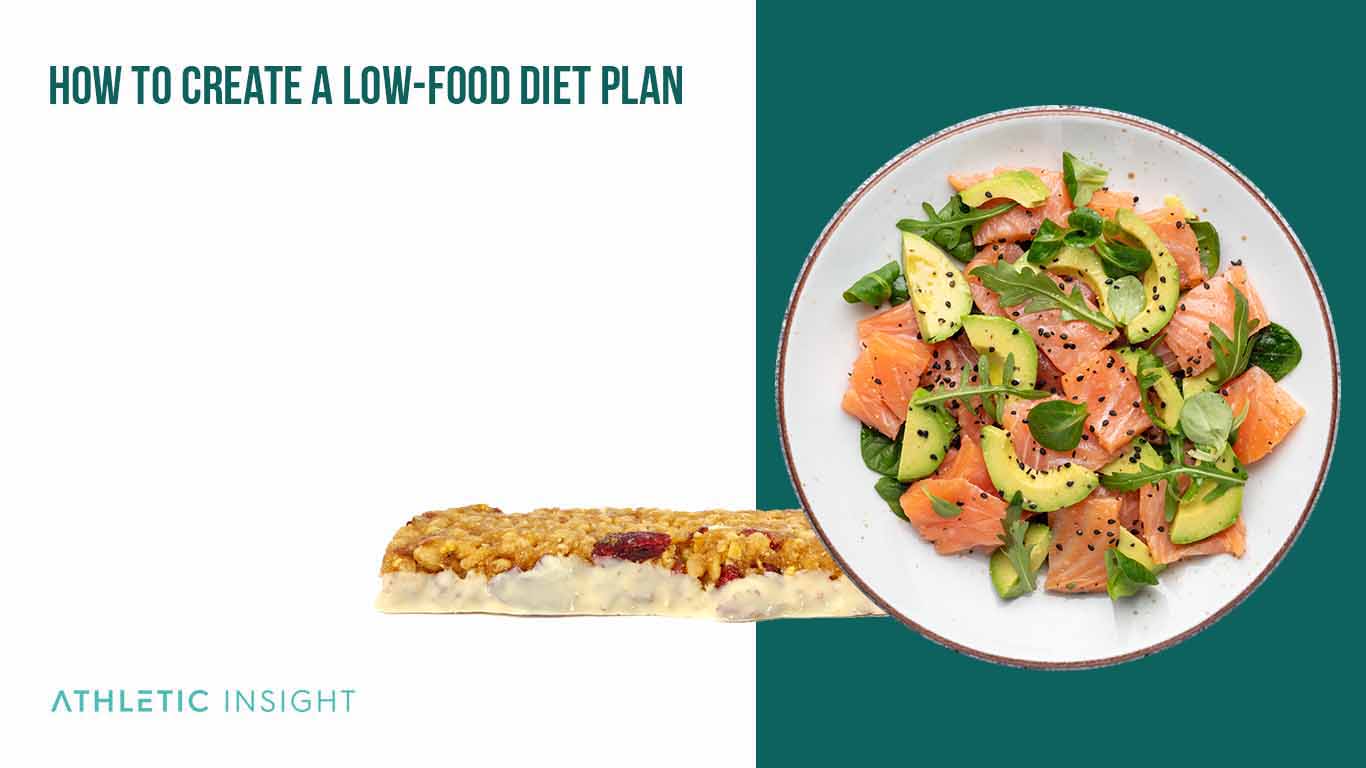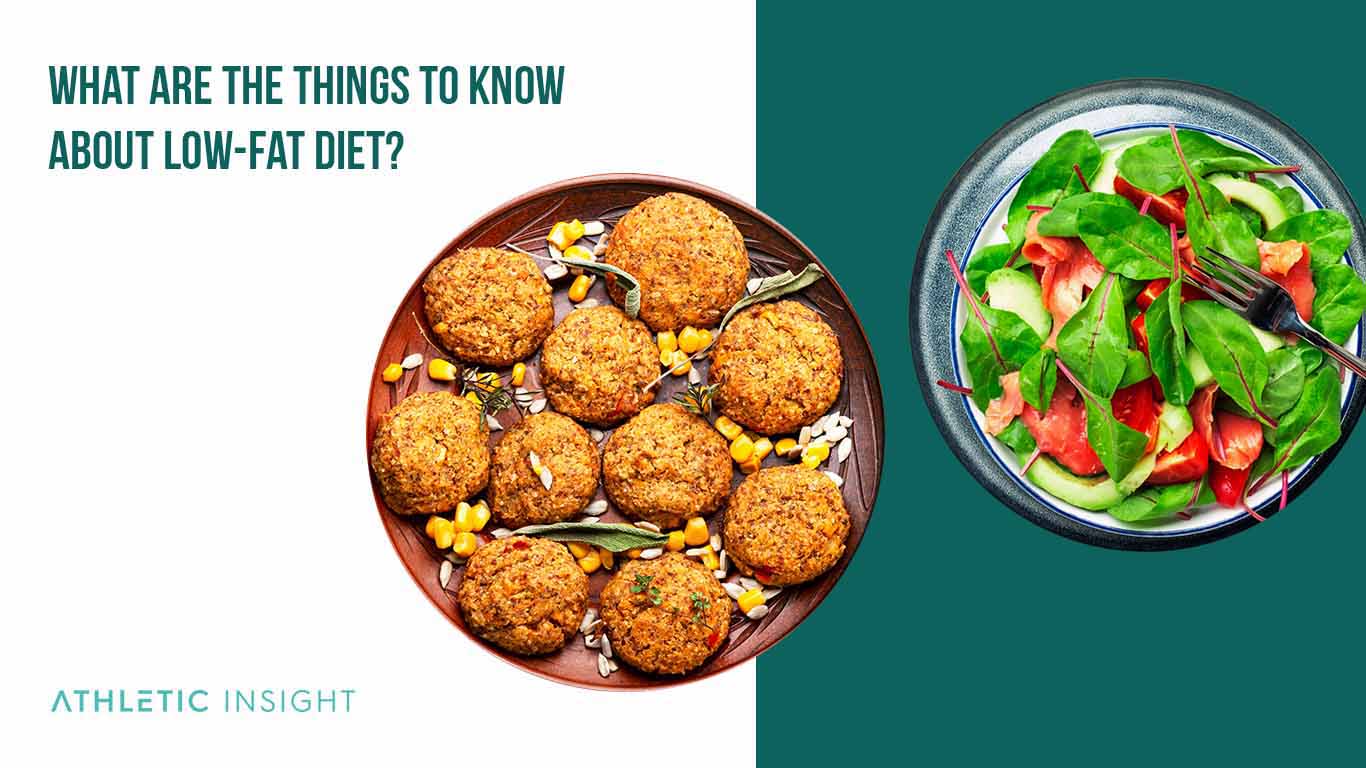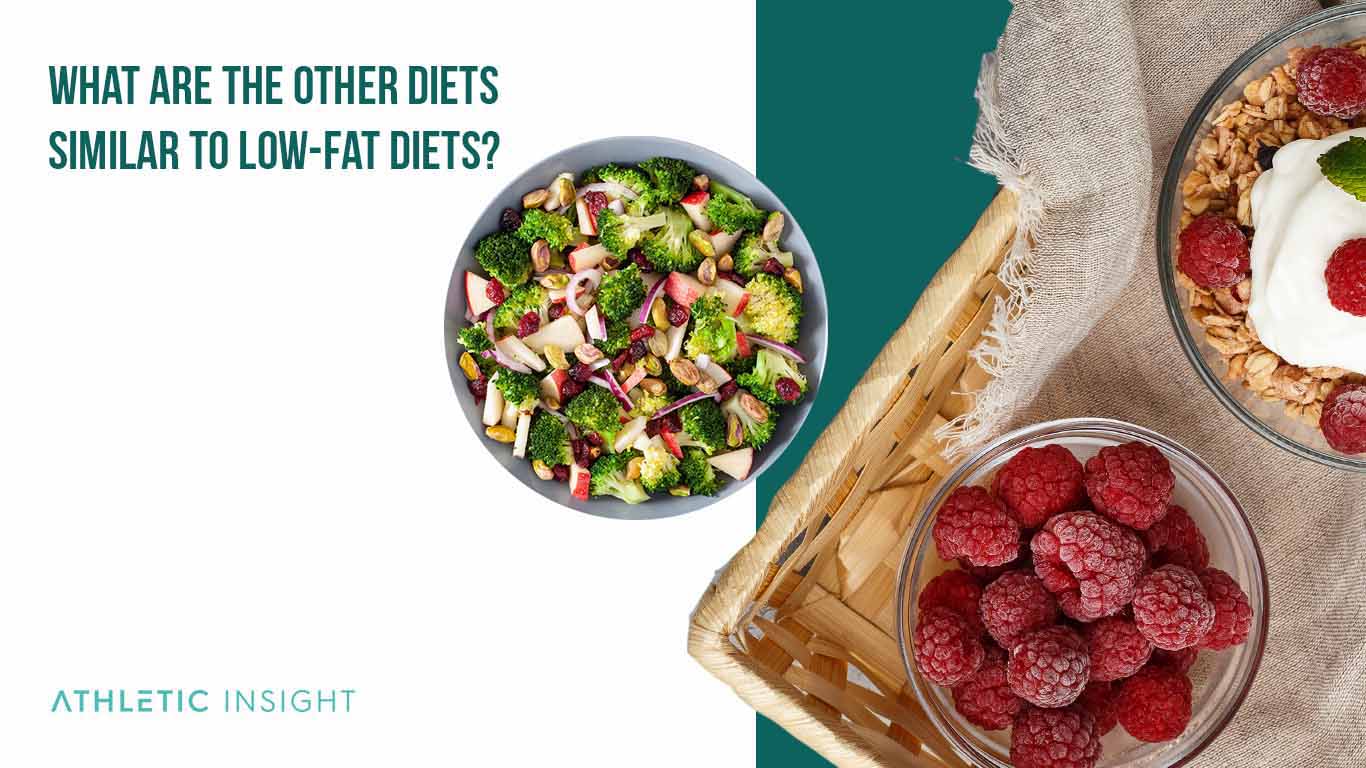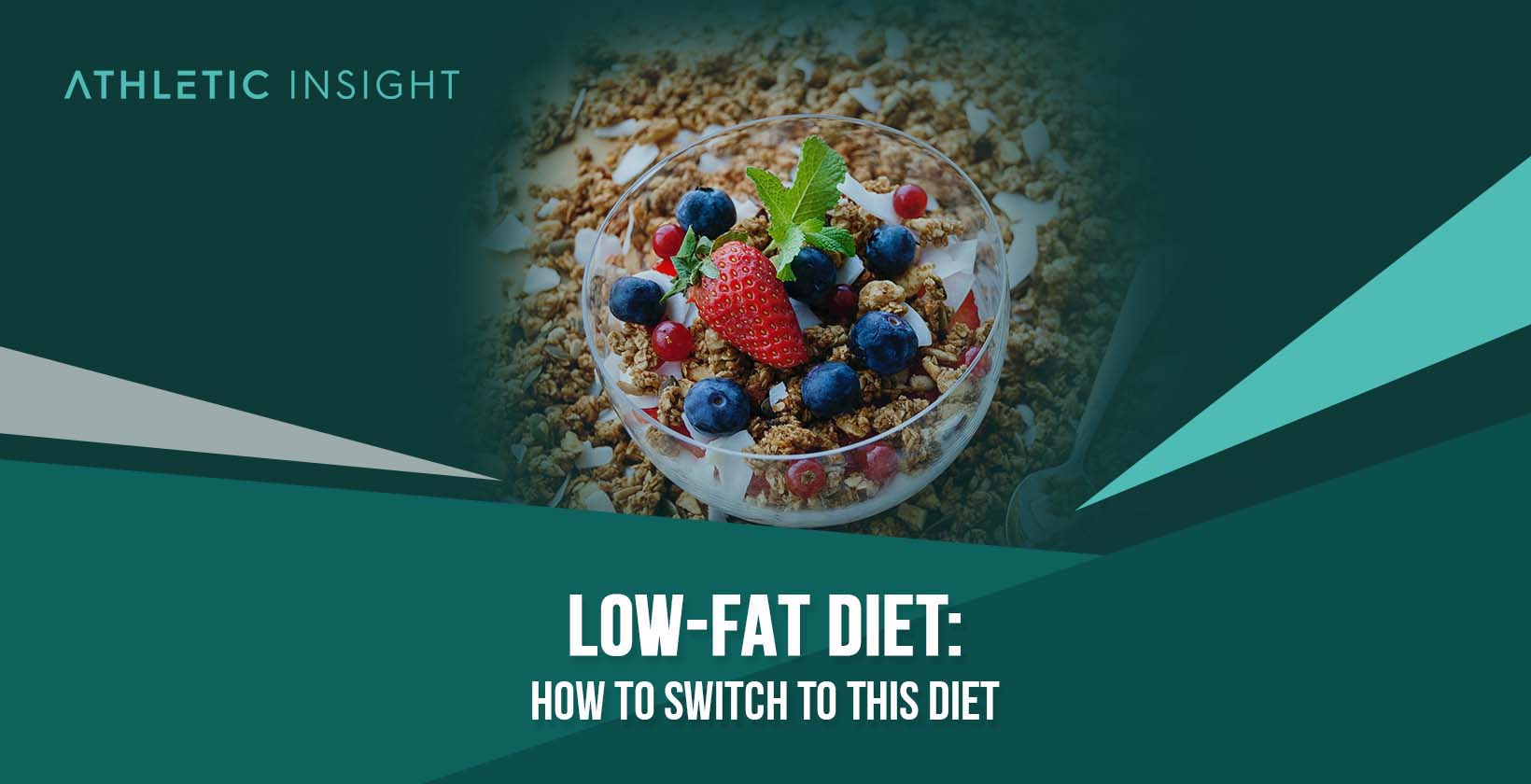Low-fat diets aren’t scary. They’re redesigned approaches to eating healthy and helping you get the most out of life. They don’t cost more either. In today’s ever-evolving diet scene, terms like low carb low-fat diet and low carb high-fat diet convolute information and what a healthy low-fat diet plan includes and excludes.
In simple terms, a low-fat diet plan reduces the consumption of fats to help reduce heart disease, types of cancers, and obesity. It also means introducing high-quality plant-based foods like whole grains, vegetables, fruit, low-fat dairy, poultry, and omega-rich fish.
Low-fat foods include dark leafy and cruciferous veg, fruits, beans and legumes, and mushrooms. But chicken or turkey breast, some fish, low-fat dairy, and egg whites are also excellent low-fat options to include in a healthy eating plan. This category is much larger and more fulfilling than you may have realized.
A low-fat diet plan incorporates low-fat foods and cooking methods into a daily regime of healthy living partnered with forms of exercise. A low-fat vegan or low-fat keto diet may work well with your personal food choices.
Incorporating low-fat foods into your healthy-eating plan may sound daunting, but it doesn’t have to be if you set goals, form a plan, and commit.
- Start gradually and celebrate small victories
- Make better choices at the source: supermarket, restaurant, social engagements
- Read and prepare low-fat menu plans with low-fat diet foods
- Pack a lunch
- Eat before going to high-fat high calorie social functions
- Educate yourself about food values
Choosing to embark on a diet journey is difficult. Understanding the differences between the plethora of information on low-carb high-fat diets, high cholesterol low-fat diets, and diet trends is to your benefit.
How to Create a Low-Fat Diet Plan
To succeed in any lifestyle improvements make a list and set goals. Creating a low-fat diet meal plan and only buying the ingredients on your low-fat diet food list is a great place to implement changes.

There are several methods you can employ to create a low-fat diet meal plan specific to you.
- Know your low-fat food sources.
- Pre-plan your meals using apps, journals, or Q-cards.
- Follow a strategic shopping list.
- Journal your successes.
- Increase your servings of fruits, vegetables, grains, and low-fat proteins.
- Avoid high-fat condiments like coffee creamers, dressings, and sauces.
- Change your cooking styles from frying and sauteing to grilling, poaching, and baking.
What Are the Low-Fat Foods That You Should Eat?
This is a loaded question because there are so many choices in this category. A good rule of thumb is ‘if it’s manufactured and processed,’ look for alternatives.
Always start with plant-based foods like vegetables, fruits, beans, lentils, legumes, brown and wild rice, and whole-wheat pasta. Low-fat proteins like tofu, skinless chicken and turkey breast, veggie burgers, and low-fat or skim milk dairy products will help sustain your energy throughout the day.
Cereals like oatmeal, high-quality low-sugar cereal, baked crackers, quality bread like pita, corn, or whole wheat tortillas, and whole-grain bagels are healthy choices to include.
What Are the Foods You Should Avoid While Doing a Low-Fat Diet?
Low-fat diets typically restrict fats from butter, lard, oils, margarine, mayonnaise, fatty meat cuts, cured and smoked meats, creamy salad dressing, chocolate, any products containing trans fats, and processed and fast food.
Let common sense prevail, and you should ‘never have fries with that’ on a low-fat diet. On a positive note, most low-fat diet plans allow for plant-based butter like peanut and almond butter in moderation.
There is some confusion about eating nuts, avocado, and salmon as they are fat sources, but they are a healthy, beneficial omega-rich fat that the body requires for a healthy balance.
What Are the Tips to Follow on a Low-Fat Diet?
Reducing high-fat and high-calorie foods is paramount. Instead of focusing on what seems to be negatives, explore the endless possibilities and benefits of a low-fat diet and the healthy and tasty foods you can eat.
Low-fat diets are a healthy way to promote weight loss and allow us to live a healthier and more balanced lifestyle. Mainstream nutrition experts and doctors recommend choosing a 20-35% fat diet from our daily caloric intake. These diet goals also complement low-fat cholesterol diets, pancreatitis low-fat, and low-fat gallstone diets.
Incorporating new low-fat foods into our daily food intake rewards us with many other benefits besides potential weight and BMI (Body Mass Index) reduction. While choosing quality low-fat foods is essential, it has to work in unison with an overall decrease in calories.
To make our bodies perform at optimum performance level it’s recommended to incorporate a form of exercise into a sedentary lifestyle.
If you’re serious about losing weight and attaining a healthier lifestyle, follow diets designed by reputable sources backed by medical and scientific research. While it may sound ideal, swallowing a pill will not produce the results you need.
1. Avoid Intake of Fat and Oil.
Avoid or reduce excess unnecessary fat and oil consumption by skipping high fat and oil-containing products. While butter is a no-brainer, train yourself to look for hidden fats in products like crackers, potato chips, coffee creamers, breakfast bars, and instant noodles that have no food value and are loaded with bad fats.
2. Avoid Chocolate.
We all breathed a sigh of relief when the dark chocolate council declared it was okay to eat their dark chocolate because it was good for us. Sadly, that may not be true. We all know that milky chocolates spend a minute on our lips and a lifetime on our hips.
The truth is that dark chocolate is high in saturated fat and high in sugar. If its antioxidants are good for us is still hotly debated.
3. Avoid Intake of Products That Have Fat Content.
Reading and understanding the information on food packaging is your best defense to avoid intake of needless high-fat content.
Plan and avoid situations where high-fat food thrives, like in social circles, to avoid the food trap. No one is suggesting you sequester yourself, but it’s okay to make alternate plans that allow you to navigate past the pitfalls.
Tips: Enlist your family and friends. Tell them that you are making changes and that you’d appreciate their support.
Consume healthy proteins like low-fat hummus snacks, fish, beans, vegetables, and fruit when the craving persists. Eating slower and enjoying high-protein meals and snacks will sustain you longer and help to starve cravings.
About cravings: You’re not alone. When it comes to making dietary changes you will make mistakes. Don’t beat yourself up, and instead forgive yourself and promise to make a better choice next time. While you may have heard this before, revisit these tips and see if you can’t find a solution that will aid you in overcoming these relentless cravings.
4. Choose Low-Fat and Non-Fat Products if Possible.
Fat is everywhere, and our bodies require quality fats to function. But our western diets have done us a disservice by supplying high-fat content foods with little nutritional value.
Low-fat and non-fat foods are healthier alternatives. Once you become more familiar with the food circle on the perimeter of the supermarket, you’ll begin to understand that there’s no need to stroll down each aisle.
Fruits, vegetables, beans, and lentils are non-fat items though with a few exceptions. Avocados, olives, and coconuts have a high-fat content, and on low and non-fat diets, these should be consumed only in very small amounts.
5. Choose Vegetable Oil Such as Canola and Olive Oil.
Healthy fats such as canola and olive oils play a role in a healthy diet. Canola oil is a good choice for a low-saturated fat diet. Canola is high in monounsaturated fats, which fight high cholesterol levels, making it ideal for low-fat, low-fat cholesterol diets.
Olive oil has a stellar reputation as a heart-healthy fat. It is linked to many health benefits like reducing inflammation and diabetes, is rich in antioxidants, and is part of the Mediterranean diet.
6. Avoid Nuts or Limit Intake.
In a nutshell, nuts contain nearly 80% fat. While most of the fats found in nuts are healthy fats, the fat content is not suitable for low-fat or fat-reduced diets and you should consume nuts in moderation.
Consuming too many nuts increases caloric input; nuts can cause uncomfortable gas, bloating, and even diarrhea.
7. Read Food Labels to Avoid Unnecessary Fat Intake.
Choosing a low-fat diet plan is like educating yourself on food label basics. Laws force food companies to disclose certain aspects of the food they produce for consumption, and the information they provide has become more uniform and easier to understand.
Look for these nutrition facts to ensure there are no hidden fats, excess calories from sugar that will turn to fat, and high sodium content.
Understanding the ingredients in the food you consume makes you better equipped to make better choices.
8. Avoid High-Fat Processed Food.
It’s not your fault. You never had a chance because food industries use a scientific formula called the ‘bliss point’ that triggers a pleasure response in our mouth which is directly sent to your brain before you can even swallow.
This formula trains your tastebuds and you to crave more. That’s how the high fat, processed food industry spends its money so that you, in turn, become a victim of their formula and become overweight and unhealthy.
Remember to shop with a low-fat diet meal plan and on the perimeter of the store. Fresh is the best!
What is a Sample Diet Plan for a Low-Fat Diet?
The Mayo Clinic has a sound reputation in the health industry, and their 1200 low-fat calorie diet plan suggests a possible weight loss of 6-10 pounds during the first two weeks and 1-2 pounds after that each week.
Here is a snapshot of the Mediterranean low-fat diet menu.
- Breakfast: Overnight oats with berries and pear
- Lunch: Tuscan white bean soup with pesto drizzle
- Dinner: Sheet-pan roast chicken with broccolini, onion, and tomatoes
- Snack: 1 cup sliced bell peppers and a banana
Here is a snapshot of the Gastroenterology Association low-fat breakfast, a higher-calorie value.
- Breakfast: 1 banana, bran flakes, medium poached egg, whole-wheat toast, 1 cup non-fat milk
- Lunch: vegetable soup, saltine crackers, white turkey meat, celery sticks, bread, apple, non-fat milk, coffee, or tea
- Dinner: spinach salad with tomato, broiled halibut, steamed rice, beans, sweet rhubarb
- Snack: Carnation Instant breakfast with non-fat milk
What Are the Recipes for a Low-Fat Diet?
Low-fat diets include all the low-fat foods listed in this article and low-fat cooking methods like broiling, grilling, poaching, and baking to increase the food’s nutritional and flavor value.
High protein low-fat diets may work well with low-fat diets providing the proteins are a low-fat source. Switching to a new food routine and including a 7-day low-fat diet meal plan may encourage and motivate you in this new endeavor.
Here are 3 quick-look low-fat recipes:
- A Two-minute breakfast smoothie is a great way to kickstart your day. Or how about a filling and sustaining bowl of apple cinnamon oatmeal?
- Ratatouille & ricotta macaroni provides a mouthwatering lunch paired with wedge salad skewers.
- For dinner, the low-fat recipes are endless, but how about a chicken pasta bake or pulled pork tacos? And dessert?
Did you know that even changing how you prepare and cook a meal has the power to reduce the number of calories and fat?
What Are the Things to Know About Low-Fat Diet?
Fat is an essential component of a healthy diet. Too much unhealthy fat leads to obesity, heart disease, diabetes, and cancers. Fats have twice the caloric value of other food sources, making them a potential problem when consumed in large quantities.

If you’re confused about the terminology behind, ‘what is a low-fat diet? and ‘how will it impact your life? you’re not alone.
Low-carb, high-fat diets differentiate from low-fat diets by limiting foods like grains, pasta, and legumes while including oils, butter, nuts, seeds, and full-fat dairy. A low-fat diet menu includes vegetables, fruits, lean meat, beans, and lentils but reduces fat consumption.
A low-fat diet plan means making a change to your current routine. The foods part of a healthy low-fat diet are more nutritious, better tasting, and provide a body with the fuel it needs to operate efficiently.
A low-fat diet plan results in a healthier mindset and overall well-being. Not eating greasy french fries makes us proud and drastically increases our long-term health forecast.
Studies on women, as noted in the Journal of Nutrition, suggest in a nine-year-long dietary case study an astonishing reduction in several critical medical conditions.
- 15-35% reduction of deaths in breast cancer survivors
- 13-25% reduction of insulin-dependent diabetes
- 15-30% reduction of coronary heart disease
What Are the Benefits of a Low-Fat Diet?
The benefits of a low-fat diet can lead to improved health and weight loss and become part of a daily habit. No one suggests that this journey is easy, but with the recommended increase in daily activity, the personal gains outweigh what may seem like coping with insurmountable challenges.
However, these restrictions aren’t restrictive. You’ll eventually make healthier lifestyle choices for yourself and your family.
A healthier version of you will look and feel better, and overall health conditions like bad cholesterol, heart disease, diabetes, high blood pressure, inflammation, and even sleep apnea diminish.
These positive results and weight loss make moving and breathing easier and result in more manageable joint and back pain that will have you enjoying the life you deserve.
What Are the Possible Health Risks of a Low-Fat Diet?
All eating and health plans preclude some cautions. Low-fat diets are safe for most adults, but individuals with diabetes should consult with their healthcare professional regarding adjustments to diets. Understanding your individual while eating a low-fat diet is paramount.
Adding a low-fat high-fiber diet too quickly may result in indigestion, gas, and bloating until the body adjusts to the changes. Implementing incremental dietary changes is a great way to accustom your body and mindset.
Healthy fats are an important part of our health, and engaging in a strict low-fat diet that dips into the 10% fat from the calorie range may impair brain function, cause hormone imbalances, and wreak havoc with insulin levels.
Fat provides the body with the essential tools for building cell membranes and helps absorb Vitamins A, D, E, and K.
The risk of eating a low-fat diet affects individuals differently, and you should discuss any drastic changes with your health care practitioner.
Who Should Follow a Low-fat Diet?
A healthy low-fat diet regime is beneficial for individuals concerned with excess weight, high blood pressure, cholesterol, heart concerns, back and joint pain, and complications from diabetes. Limiting the consumption of fats for a short time may result in weight loss and reduce health concerns.
However prolonged exclusion of healthy fats may produce negative results and should only be followed on the advice of a medical or nutrition specialist.
How Long Can You Go on a Low-Fat Diet?
Super-low-fat diets are used to jumpstart a weight loss program often supervised by professionals. But they aren’t healthy in the long run, and there isn’t any clear and specific data that suggests long-term low-fat diets are beneficial as initially believed.
Healthy diets in the 30% low-fat range are a great lifestyle choice recommended permanently by some advocates.
Good and bad fats are still up for debate. We need good fat in moderation to survive.
What Are the Other Diets Similar to Low-Fat Diets?
Atkins, South Beach, Mediterranean, Keto, Paleo, and low-carb are other diets that exclude one food group in favor of another and are part of a long list of diets. A balanced diet includes portions of all food groups.

A low-fat diet plan also includes all food groups, and only fats are restricted though still included in moderation.
Fad diets come and go, but our obsession with food and losing weight is paramount in our daily lives. Choosing to follow a balanced diet that blends the five groups is a solid diet plan. Protein, vegetables, fruit, grains, dairy, and fat are part of the recommended daily diet.



